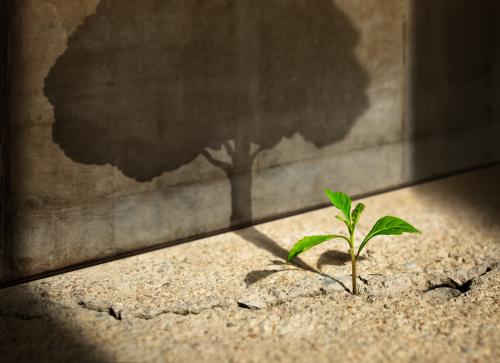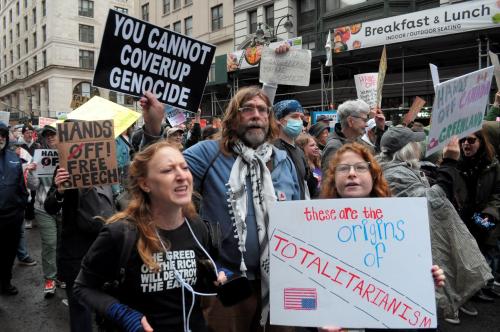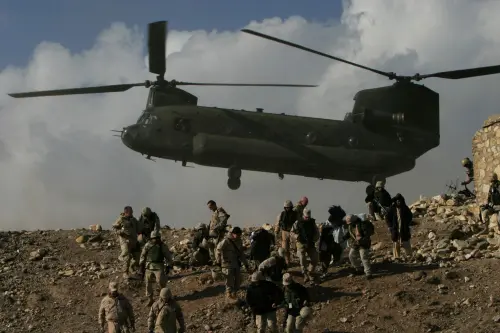Almost a year has passed since a massive tsunami devastated coastal communities throughout Asia in one of the worst natural disasters in modern times. On Dec. 26, 2004, an earthquake measuring 9.0 on the Richter scale sent ocean waves to Asian and East African shores, killing more than 225,000 people and displacing 1.7 million. The disaster spurred into action governments, international organizations, and hundreds of nongovernmental organizations (NGOs). Relief operations proceeded quickly and effectively, providing food, clean water, health services, and temporary shelter for hundreds of thousands of people. The remarkable response prevented the widely anticipated “second tsunami” of disease and malnutrition.
Still, the danger existed that the tsunami relief story would play out like too many others: Aid pledges are made following the disaster, only to go unfulfilled as interest and attention wane. But tsunami relief has been sustained. Donors are keeping their pledges, NGOs have billions in the bank to spend on projects, and survivors continue to be cared for relatively well. Substantial government aid packages have been complemented by an astonishing level of private giving. For example, the U.S. government has pledged a total of $857 million, and U.S. private and corporate donations total at least $1.48 billion.
To date, the world has raised an estimated $13.6 billion. Some 92 countries provided assistance during the past year, including countries, such as North Korea and Niger, themselves in need of aid. The region is now transitioning from relief to recovery. Almost all the 150,000 Indonesian students who lost their educational facilities returned to school within two months of the disaster. Most are meeting in tents or temporary facilities, but plans are in place to rebuild more than 350 schools. Tens of thousands of unemployed people have gone back to work through cash-for-work programs and the busy construction sector.
These are temporary fixes, however, and a long-term solution depends on restoring the devastated fishing, agriculture, and small-business sectors and diversifying the local economies. Fortunately, the tourism industries of affected countries have bounced back quickly, with the exception of the Maldives, which has seen a 45 percent drop in visitors this year. Food supplies are adequate. Health and sanitation remain good as the reconstruction of medical facilities progresses. Housing is the short-term challenge that most frustrates the displaced persons and aid donors. Living conditions in tent camps and temporary shelters have deteriorated over the year, and though increased donor attention has recently accelerated the pace of construction, the number of people in permanent or adequate temporary houses remains low.
Except for the Maldives, the impact on the national economies of affected countries will be relatively small, but huge locally. Enough money has been raised to cover most medium-term reconstruction costs, if it is well spent. The unprecedented amount of resources mobilized may allow affected areas to realize the relief community’s mantra of “building back better”—rebuilding communities with better housing, education, healthcare, and economies than existed before the disaster. Due to their sizable aid commitments, international donors have sustained their focus on transparency and accountability in the recovery process. Innovative publicly available systems have been developed to track tsunami-related spending and to match donors with recipients, such as the U.N. Tsunami Expenditure Tracking System and publicly accessible online databases that keep track of aid dollars. Indeed, the most pressing need is for better coordination of the hundreds of groups involved. Ironically, one problem at this point may be that some organizations have too much money. Some relief officials complained earlier in the year that NGOs flush with money were able to work alone and “fly the flag,” ultimately hindering the integration of relief operations and leading to duplication.
What explains the unusually generous world response? First, the sheer size and uniqueness of the calamity: Giant tsunamis are much less common than deadly earthquakes. The timing of the disaster during the holiday season and the extensive media coverage contributed to public awareness.
The disaster also struck many Westerners personally, as more than 2,000 tourists from over 40 countries were killed. And it helped that relief supplies could reach the affected region easily by sea. The relief effort has also had the benefit of former U.S. President Bill Clinton, who serves as the United Nations’ special envoy for tsunami recovery. Before serving in his U.N. capacity, Clinton worked with former President George H.W. Bush to raise private U.S. donations.
Donors and governments are also working to limit damage from future disasters and bolster their ability to respond. The United Nations and Indian Ocean countries have started to develop a regional tsunami early warning system, which is slated for completion by late 2006. Painfully aware that coastal overdevelopment, such as the clearing of mangrove forests, magnified the waves’ impact, governments and NGOs are trying to balance reconstruction goals with environmental protections needed to mitigate future damage. It isn’t easy. In Aceh, for example, the demand for lumber has fueled illegal logging, which could increase the region’s vulnerability to future disasters.
While full reconstruction may take five years or longer, if the level of commitment demonstrated by the international community is maintained, the tsunami will be remembered as a model for effective global disaster response, not just as a disaster. Because of the speed and generosity of the response, its effectiveness compared to previous (and even subsequent) disasters, and its sustained focus on reconstruction and prevention, we give the overall aid effort a grade of “A.” See the appended graphs of the region’s progress since the tsunami struck almost one year ago.
The Brookings Institution is committed to quality, independence, and impact.
We are supported by a diverse array of funders. In line with our values and policies, each Brookings publication represents the sole views of its author(s).



Commentary
The Tsunami Report Card
December 1, 2005